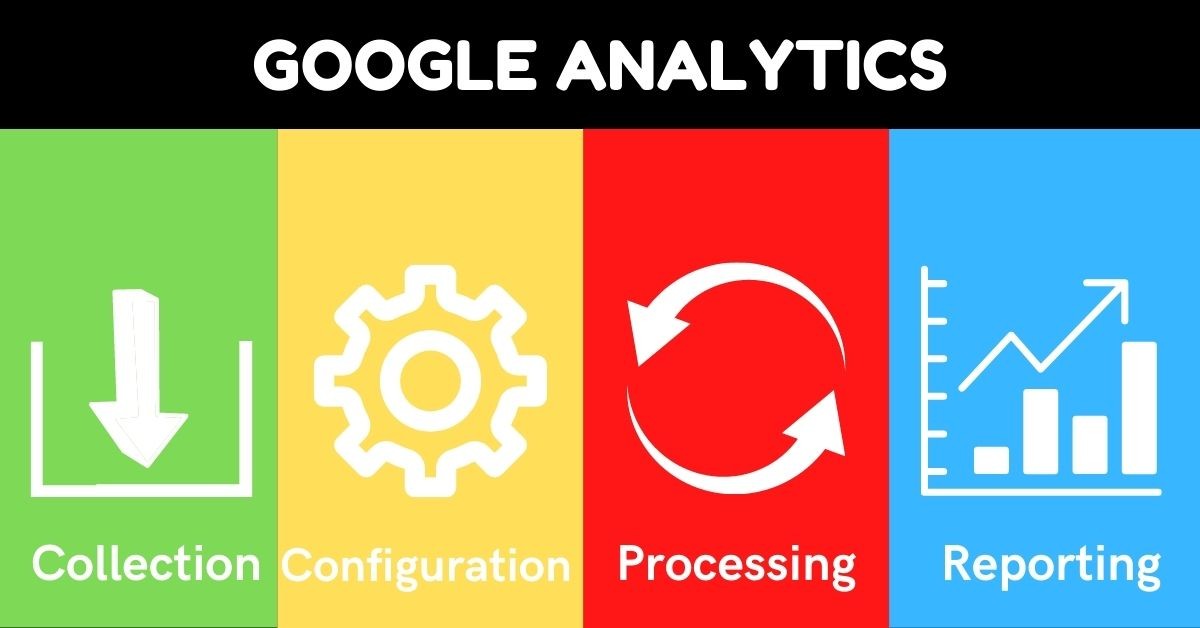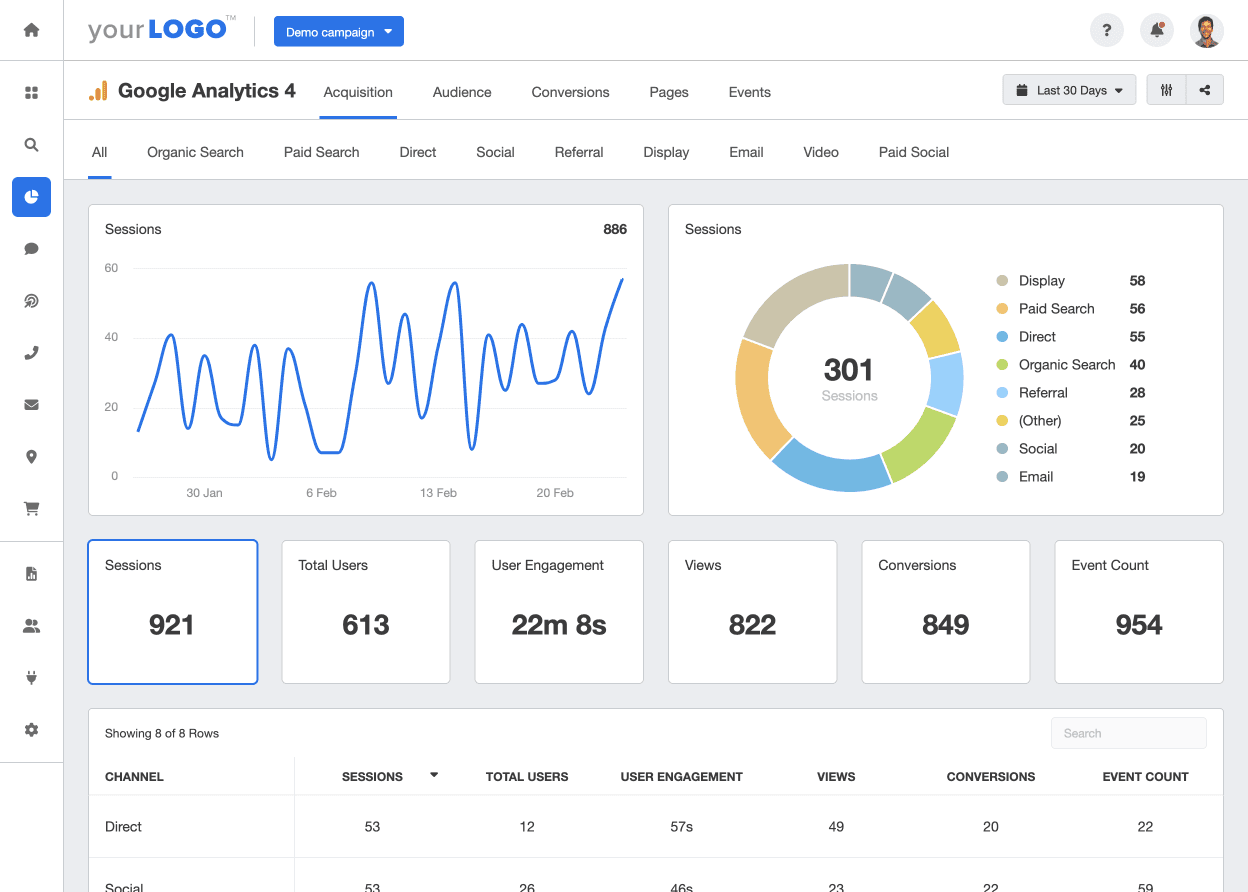Unboxing the Mystery: When Does the Google Analytics Tracking Code Send an Event Hit to Analytics?
Unboxing the Mystery: When Does the Google Analytics Tracking Code Send an Event Hit to Analytics?
Blog Article
Enhance Your SEO Approach With Effective Google Analytics Monitoring Code
Including Google Analytics tracking code into your Search engine optimization method is a crucial step toward accomplishing measurable results. What certain strategies can you take on to maximize the influence of this data on your SEO efforts?

Recognizing Google Analytics Fundamentals
To successfully leverage Google Analytics for SEO, it is vital to comprehend its fundamental principles. Google Analytics functions as a powerful tool for monitoring and examining web site web traffic, giving insights that are crucial for optimizing search engine performance. At its core, the system allows customers to keep an eye on customer behavior, web traffic resources, and crucial efficiency indications (KPIs) such as bounce prices and session durations.
Familiarity with the interface is vital. Key sections consist of the Target market, Procurement, and Actions tabs, each providing beneficial data. The Audience area offers demographic understandings, aiding to customize web content to target individuals properly. The Procurement tab discloses exactly how visitors get to the site, whether through natural search, paid advertisements, or social media sites, directing calculated changes in advertising initiatives.
Understanding metrics such as natural traffic quantities and conversion rates is essential for assessing search engine optimization performance. Eventually, understanding these essentials permits electronic online marketers to harness the complete possibility of Google Analytics, driving notified decisions that boost overall SEO methods. By developing a strong structure, companies can effectively examine their performance and identify opportunities for enhancement in their on-line visibility.
Establishing Up Tracking Code
Correctly establishing the monitoring code is vital for accurate data collection in Google Analytics. The initial step involves producing a Google Analytics account and building, where you will certainly get a distinct monitoring ID. This ID is essential for connecting your site's information to your Google Analytics account.
As soon as you have your monitoring ID, incorporate the monitoring code snippet right into your internet site's HTML. This is generally put in the header area of each web page to ensure it tons early in the web page providing process. If you're utilizing a Material Monitoring System (CMS) like WordPress, lots of plugins streamline this process, enabling you to add the tracking code without direct HTML editing and enhancing.
After applying the monitoring code, it is important to examine its performance. If the monitoring code is properly mounted and working, you can use the Google Tag Aide device to confirm. In addition, keep an eye on the real-time reporting function in Google Analytics to confirm that information is being gathered properly.
Making certain that the monitoring code is properly established lays the foundation for effective data analysis, enabling you to make informed decisions to improve your search engine optimization method and general site efficiency.
Secret Metrics to Display
Recognizing crucial metrics to monitor is necessary for understanding the effectiveness of your search engine optimization approach through Google Analytics. By concentrating on particular data points, you can evaluate the influence of your optimization initiatives and make notified choices to boost performance.
One of the main metrics to track is natural website traffic, which suggests the number of site visitors arriving at your website through online search engine. This statistics shows the general wellness of your search engine optimization technique. Next off, keep an eye on the bounce rate, which shows the portion of site visitors that leave your website after viewing only one page. A high bounce rate might signal that your material is not fulfilling individual expectations or that your landing web pages need renovation.
In addition, take into consideration tracking conversion prices, as these metrics expose exactly how well your site meets its company objectives, such as creating leads or sales. Keyword phrase rankings are likewise critical; tracking modifications in keyword placements aids examine the performance of your targeted search engine optimization efforts. Ultimately, analyze the ordinary session period, which suggests user engagement and content significance. By closely adhering to these vital metrics, you can acquire beneficial insights right into your search engine optimization strategy's performance and recognize areas for renovation.
Studying User Behavior
Comprehending customer behavior is important for improving your SEO strategy and making the most of website performance. when does the google analytics tracking code send an event hit to analytics?. By examining just how site visitors engage with your website, you can discover beneficial insights that notify your web content and design decisions. Google Analytics supplies a wide range of data on individual involvement metrics, such as bounce rates, time on site, and page views per session. These metrics help recognize which web pages resonate with your audience and which might call for optimization. find more information
Additionally, tracking user flow can reveal common navigation paths, highlighting possible bottlenecks or areas for improvement. Understanding the demographics, interests, and geographic locations of your visitors permits for more tailored content that speaks with their needs. Utilizing segmentation features in Google Analytics further enhances your ability to analyze user behavior by permitting you to contrast various audience groups.
Furthermore, keeping an eye on conversion prices and individual actions can provide understandings right into the effectiveness of your calls to action and general site design. This holistic view of customer habits is vital for making notified choices that enhance individual experience and drive greater interaction, inevitably adding to boosted SEO efficiency.
Leveraging Insights for SEO
Consistently leveraging insights gotten from user behavior evaluation can considerably boost your SEO efforts. By using Google Analytics, you can identify essential metrics such as bounce rates, session period, and customer circulation, which expose how site visitors communicate with your web content. These insights enable you to determine locations requiring improvement, such as high departure pages or underperforming keyword phrases.

In addition, tracking natural web traffic sources offers clarity see this page on which channels are most reliable, allowing you to designate sources tactically (when does the google analytics tracking code send an event hit to analytics?). By examining conversion rates alongside traffic information, you can recognize which pages drive real service results, refining your SEO approach better
Incorporating these understandings right into your material strategy not just improves exposure but additionally fosters a more user-centric strategy. Eventually, a data-driven SEO approach informed by analytics not just improves rankings but additionally straightens your purposes with customer assumptions, resulting in continual growth and involvement.
Conclusion
Effective application of Google Analytics tracking code considerably enhances a SEO method by giving crucial insights into user behavior and web traffic resources. Ultimately, leveraging these insights contributes to refining SEO efforts, driving more relevant traffic, and improving overall website performance.
Incorporating Google Analytics tracking code into your you can try here Search engine optimization strategy is a pivotal step towards achieving quantifiable outcomes. At its core, the platform makes it possible for individuals to monitor individual behavior, traffic sources, and vital efficiency signs (KPIs) such as bounce rates and session durations.
Comprehending customer habits is essential for fine-tuning your SEO method and making the most of site efficiency.Consistently leveraging insights obtained from user habits evaluation can substantially improve your SEO initiatives.Efficient implementation of Google Analytics tracking code significantly boosts a Search engine optimization approach by supplying vital understandings into user behavior and website traffic sources.
Report this page